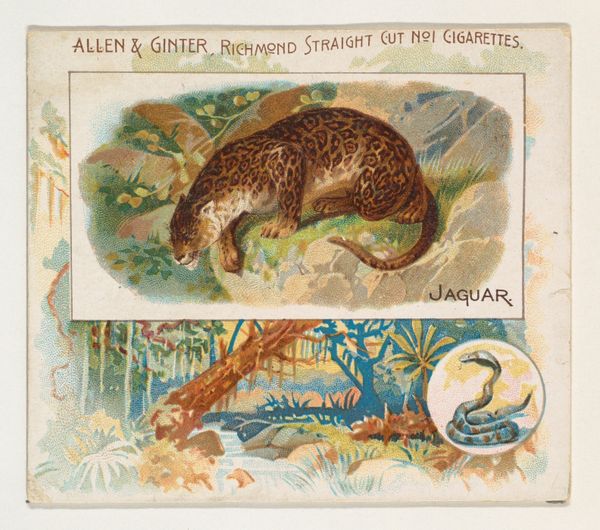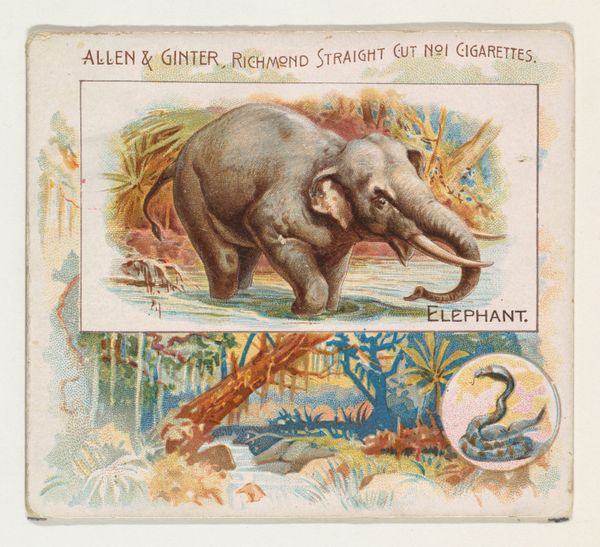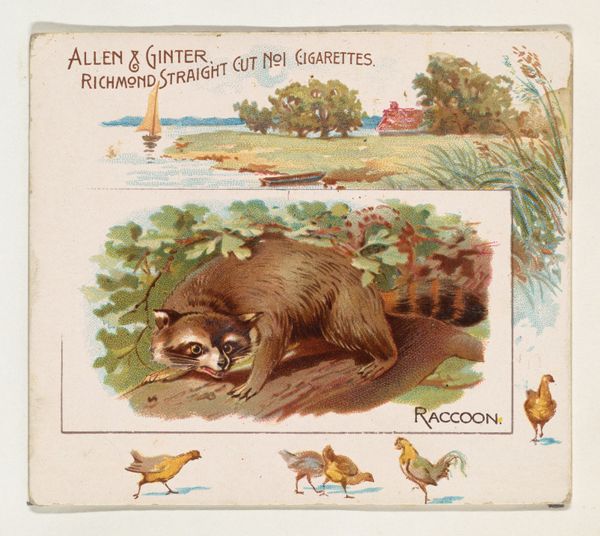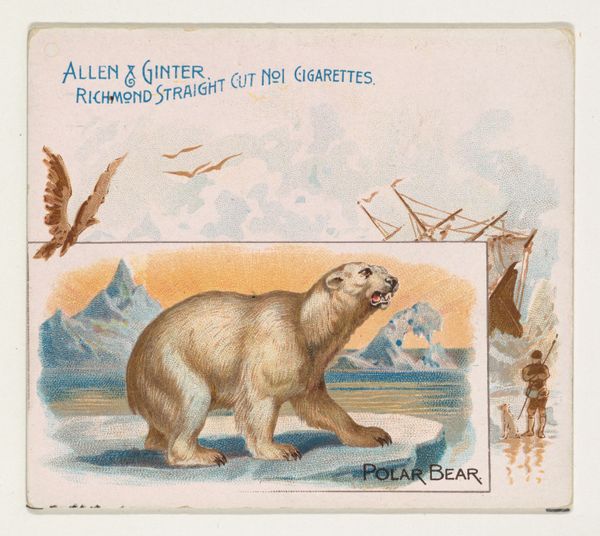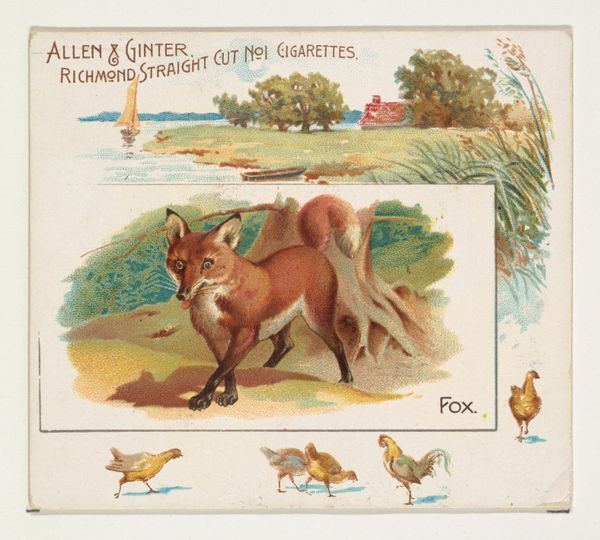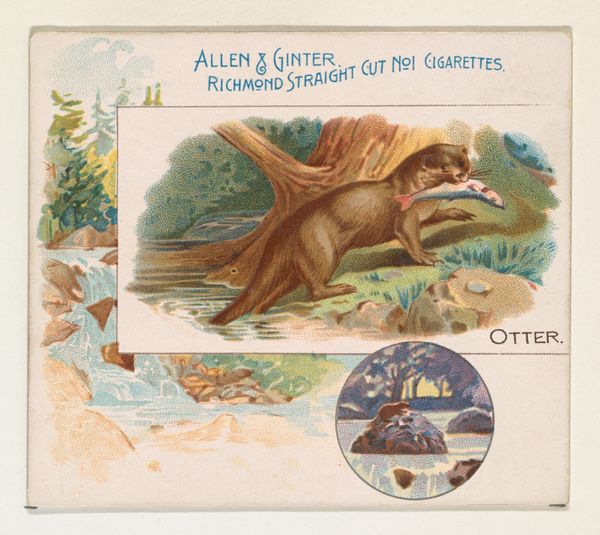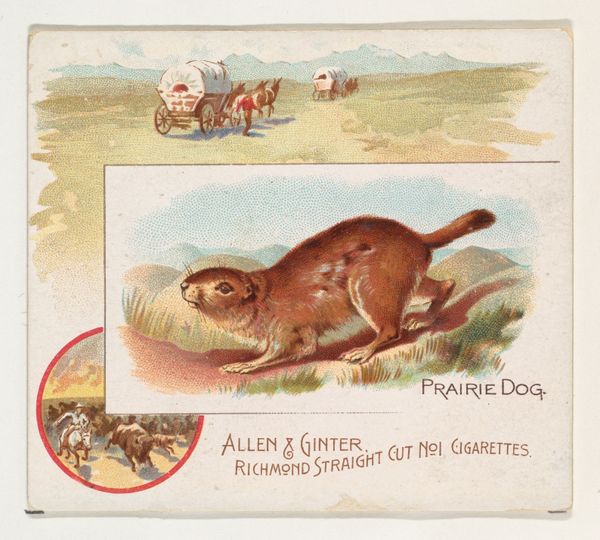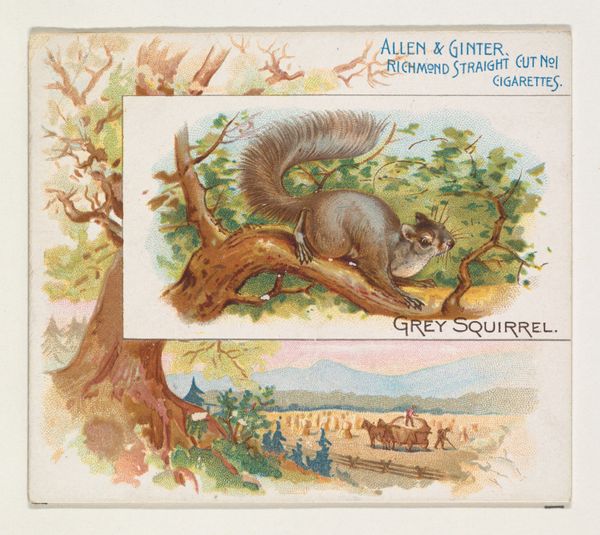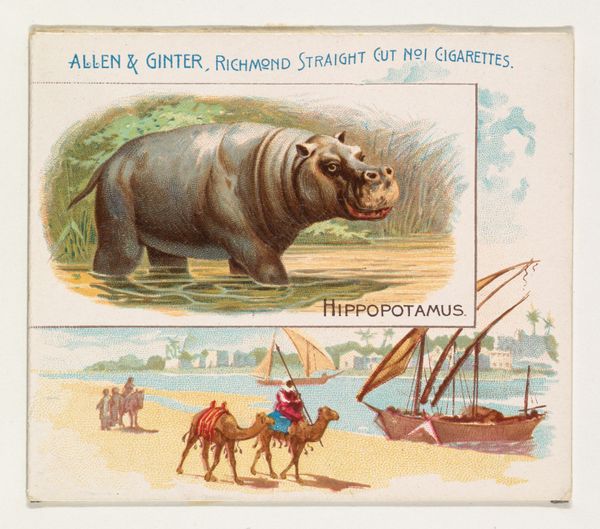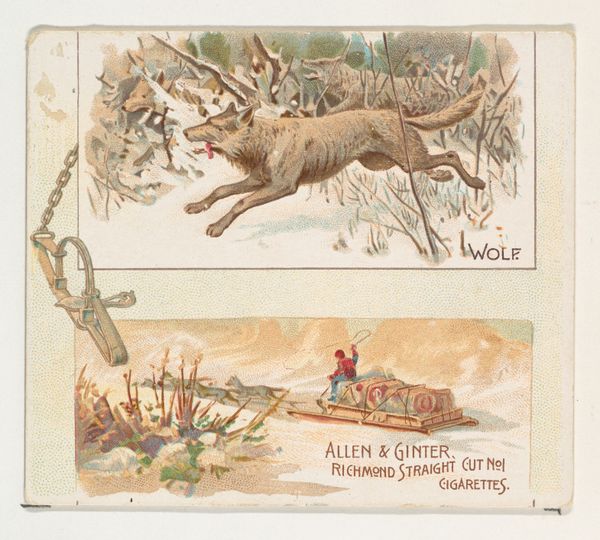
Tiger, from Quadrupeds series (N41) for Allen & Ginter Cigarettes 1890
0:00
0:00
drawing, coloured-pencil, lithograph, print
#
drawing
#
coloured-pencil
#
animal
#
lithograph
# print
#
impressionism
#
figuration
#
coloured pencil
Dimensions: Sheet: 2 7/8 x 3 1/4 in. (7.3 x 8.3 cm)
Copyright: Public Domain
Curator: Let's talk about this lithograph from 1890, "Tiger, from Quadrupeds series (N41) for Allen & Ginter Cigarettes." Notice the printmaking combined with the colored pencil, telling us about industrial printing's early forays into colour. Editor: It's such a striking image for a cigarette card! The tiger looks almost… playful, but also a little menacing. How would you interpret this work, thinking about what it’s made of? Curator: Well, let’s consider its origin. Cigarette cards were mass-produced items, cheaply made to stiffen packaging and entice consumers. So this image of the tiger wasn’t meant for a museum; it was designed to be disposable, circulated widely through the marketplace. The means of production, lithography, made this broad distribution possible. How does that affect your understanding of it? Editor: It's interesting to think about art entering people’s lives through everyday items like this. So the medium dictated how and where it would be seen, becoming part of the culture of consumption at the time? Curator: Exactly. The printing and colored pencil—consider them technologies. Allen & Ginter weren’t just selling cigarettes; they were also selling dreams of exotic animals and distant lands to everyday consumers. This intersects directly with imperial desires and trade networks from that period. What is high and low art? That depends on where these are seen, in museums or sold with nicotine. Editor: It flips the traditional idea of 'art' on its head. So, it wasn't created as a precious, unique object, but for mass consumption with something potentially harmful to health! I never considered those aspects. Curator: Right! Now, think about how that contrasts with, say, a singular oil painting on canvas hung in a gallery. This card makes you think about the material conditions of its creation and dissemination and that of impressionism, thus making this work historically significant. Editor: I see, the material history reveals its cultural purpose. That adds a whole new layer of understanding. Curator: Indeed! Every piece we encounter carries such narratives within its making and circulation.
Comments
No comments
Be the first to comment and join the conversation on the ultimate creative platform.


